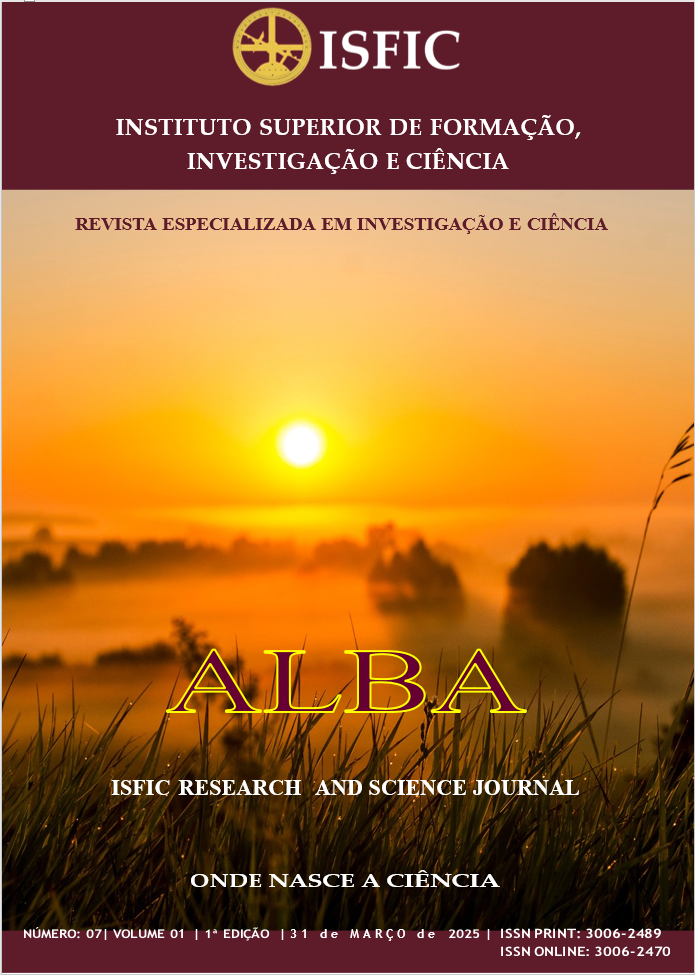Index of internal effort: A robust indicator for the public service
Abstract
This article discusses advances in the development of the Index of Internal Effort (IIE), a framework specifically designed to quantify Explicit Intellectual Activities (EIA) performed by public servants. The aim is to highlight the progress made and to demonstrate that by using solid philosophical principles in conjunction with robust mathematical structures, it is feasible to create an automated evaluation system for the results generated by the EIAs carried out by the public servants. The IIE is applicable on different scales, from specific sectors to large-scale, as exemplified by the data available on the Lattes platform for curriculum. To illustrate the technique's versatility, three distinct proofs of concept (PoC) are presented: the quantification of programming codes on the Arduino platform, the quantification of intellectual property patents in an international context, and the quantification of the complexity of electronic games, focusing on the Real Time Strategy (RTS) genre. The results obtained reveal that the IIE framework, with its complexity quantification function (IIEa), is significantly correlated with the specific techniques tested in the PoCs, making IIEa a viable option for online evaluation of EIAs. Due to its robust structure, focusing on evaluating complexity and effort employed in EIAs, IIEa can be widely used to automate performance evaluation systems. During the tests conducted, no case was identified that refuted the premise of using IIEa.
Downloads
References
Avena, M. J.; & Barbosa, D. A. (2017). Indicadores bibliométricos das Revistas de Enfermagem sob a ótica das bases indexadoras. Rev. esc. enferm. USP, São Paulo, v. 51, e03262. Disponível em: < http://www.scielo.br/scielo.php?script=sci_arttext&pid=S0080-62342017000100455&lng=en&nrm=iso >. https://doi.org/10.1590/s1980-220x2017014603262.
BBC NEWS. Harry Potter, 20 anos: como livro rejeitado por editoras se tornou fenômeno infanto-juvenil. BBC News. Disponível em: < https://www.bbc.com/portuguese/geral-40403271 >.
Cativelli. A. S. (2020). Indicadores métricos de valor de patentes: construção de um Índice de Valor utilizando as patentes verdes brasileiras. Programa de Pós-Graduação em Ciência da Informação da Universidade Federal de Santa Catarina (UFSC). Tese. 284 p. Disponível em: < https://repositorio.ufsc.br/handle/123456789/219292 >.
Coordenação de Aperfeiçoamento de Pessoal de Nível Superior (CAPES). (2024). Plataforma Sucupira. Disponível em: < https://sucupira.capes.gov.br/sucupira/ >.
Di Berardino, D; Corsi, C. (2018). A quality evaluation approach to disclosing third mission activities and intellectual capital in Italian universities. Journal of Intellectual Capital. 19, pp. 178-201. DOI 10.1108/JIC-02-2017-0042.
Dorf, R. C.; & Bishop, R. H. (2011). Modern control systems. 12th ed. [s. l.]: Prentice-Hall. ISBN 9780136024583.
Editora Labrador (2016). 10 livros rejeitados antes do sucesso. Disponível em: < http://editoralabrador.com.br/blog/10-livros-rejeitados-antes-do-sucesso/ >.
Efatmaneshnik, M.; & Ryan, M. J. (2016). A general framework for measuring system complexity. Complexity, 21(S1). 533–546. doi:10.1002/cplx.21767
Fischer, T.; & Leidinger, J. (2014). Testing patent value indicators on directly observed patent value - An empirical analysis of Ocean Tomo patent auctions. Research Policy, 43(3), p.519–529. http://dx.doi.org/10.1016/j.respol.2013.07.013.
Franceschini, F.; Galetto, M.; & Maisano, D. (2019). Designing Performance Measurement Systems: Theory and Practice of Key Performance Indicators. Management for Professionals. Editora Springer International Publishing. ISBN: 978-3-030-01191-8.
Glänzel, W.; & Meyer, M. (2003). Patents cited in the scientific literature: An exploratory study of ‘reverse’ citation relations. Scientometrics, 58(2). pp. 415-428. doi:10.1023/a:1026248929668.
Groover, M. P. (2016). Automation, Production systems and computer-integrated manufacturing. 4. ed. Pearson Indie Education. 817 p. ISBN 978-93-325-7249-2.
Higham, K.; Rassenfosse, G.; & JAFFE, A. B. (2021). Patent Quality: Towards a Systematic Framework for Analysis and Measurement, Research Policy, 50(4), ISSN 0048-7333, https://doi.org/10.1016/j.respol.2021.104215.
INMETRO. O que significa a ABNT NBR ISO 9001 para quem compra? CB-25. Instituto Nacional de Metrologia, Qualidade e Tecnologia – Inmetro. Disponível em: < http://www.inmetro.gov.br/qualidade/pdf/cb25docorient.pdf >.
International Council on Systems Engineering - Incose. (2015). Systems engineering handbook: a guide for system life cycle processes and activities. 4. ed. Hoboken, USA: John Wiley and Sons. ISBN: 978-1-118-99940-0.
Jesus, C. S.; Souza, C. G.; & Leonidio, U. C. (2019). Variáveis motivacionais e patenteamento: uma revisão sistemática da literatura. In: XXXIX Encontro Nacional de Engenharia da Produção - ENEGEP. Santos. 19 p. Disponível em: < https://www.abepro.org.br/biblioteca/TN_STO_295_1668_38546.pdf.
Liu, L.; Cao, C.; Song, M. (2014). China’s agricultural patents: How has their value changed amid recent patent boom? Technological Forecasting and Social Change, 88. p.106–121. https://doi.org/10.1016/j.techfore.2014.06.018.x.
Mangaroo-Pillay, M.; & Coetzee, R. (2022). Lean frameworks: A Systematic Literature Review (SLR) investigating methods and design elements. Journal of Industrial Engineering and Management, 15(2), 202-214. https://doi.org/10.3926/jiem.3677.
Missel, S. Feedback Corporativo: como saber se está indo bem. Saraiva. São Paulo. 2012.
Miyashita, S.; Katoh, S.; Anzai, T.; & Sengoku, S. (2020). Intellectual Property Management in Publicly Funded R&D Program and Projects: Optimizing Principal–Agent Relationship through Transdisciplinary Approach. Sustainability., 12, 9923. https://doi.org/10.3390/su12239923
National Aeronautics and Space Administration - NASA. (2007). NASA Systems Engineering Handbook. Washington: NASA Headquarters. Disponível em: < https://www.nasa.gov/wp-content/uploads/2018/09/nasa_systems_engineering_handbook_0.pdf >.
Oliveira, A. A.; & Pilatti, L. A. (2021). Mensuração da complexidade de códigos em C com o método do Índice Interno de Esforço. In: Anais do XII Encontro Anual de Tecnologia da Informação – EATI. 10(2); Novembro/. Disponível em: < http://anais.eati.info:8080/index.php/2019/article/view/64/61 >.
Oliveira, A. A.; & Laureano, M. A. P. (2024). Exploring the Complexity of Games: A Study Referenced in the StarCraft 2 Game Campaign. In: XXIII Simpósio Brasileiro de Jogos e Entretenimento Digital (SBGames 2024), Manaus/AM. 12 p. 2024. No prelo.
Oliveira, A. A.; & Ribeiro, G. (2020). Sistema de Avaliação de Desempenho Baseado em Controle Adaptativo: uma Aplicação Participativa. Teoria E Prática Em Administração, 10(1), 38–52. https://doi.org/10.21714/2238-104X2020v10i1-47322. Disponível em: < https://periodicos.ufpb.br/index.php/tpa/article/view/47322 >.
Oliveira, A. A.; Santos, C. B.; & Pilatti, L. A. (2024). Bridging the gap in patent assessment: The Index of Internal Effort framework for pharma innovations. J Pharm Pharmacogn Res, 12(5): 852-869. https://doi.org/10.56499/jppres23.1859_12.5.852. Disponível em: < https://jppres.com/jppres/pdf/vol12/jppres23.1859_12.5.852.pdf >.
Pakocs, R.; & Lupulescu, N. B. (2016). Investigations regarding the evaluation of specific intellectual property production risks within Quality Management System, IOP Conference Series: Materials Science and Engineering. 161. IOP Publishing. DOI: 10.1088/1757-899x/161/1/012106.
Popper, K. R. (2001). A lógica da pesquisa científica. 9. ed. São Paulo: Cultrix. 567 p. ISBN 85-316-0236-X.
Ribeiro, G. (2017). Avaliação de desempenho: instrumento de dominação ou de gestão organizacional. São Carlos: Scienza. 128p. ISBN 9788599560532 (broch.).
Sage, A. P.; & Rouse, W. B. (2011). Handbook of Systems Engineering and Management. 2º ed.1504, Editora Wiley. ISBN: 978-1-118-21000-0.
Sales, R.; Clua, E.; Oliveira, D.; & Paes, A. (2013). An Architecture Coupled with a Provenance Model for Affective Simulations in Games based on Real World. In: XII SBGames – São Paulo – Brazil, 10 p. Disponível em: < https://www.sbgames.org/sbgames2013/proceedings/comp/04-full-paper.pdf >.
Sheard, S. A.; & Mostashari, A. A. (2010). Complexity Typology for Systems Engineering. INCOSE International Symposium, 20(1), 933–945. DOI:10.1002/j.2334-5837.2010.tb01115.x.
Sousa, F. S. De O.; Nadanovsky, P.; Dhyppolito, I. M.; & Santos, A. P. P. (2021). Um ano de e-mails não solicitados: o modus operandi de revistas e editoras predatórias. Revista Da Faculdade De Odontologia De Porto Alegre, 62(1), 71–81. DOI: 10.22456/2177-0018.114115
Speedruns Brasil. (2024). Comunidade brasileira de speedruns. Disponível em: < https://speedrunsbrasil.com/sobre/







